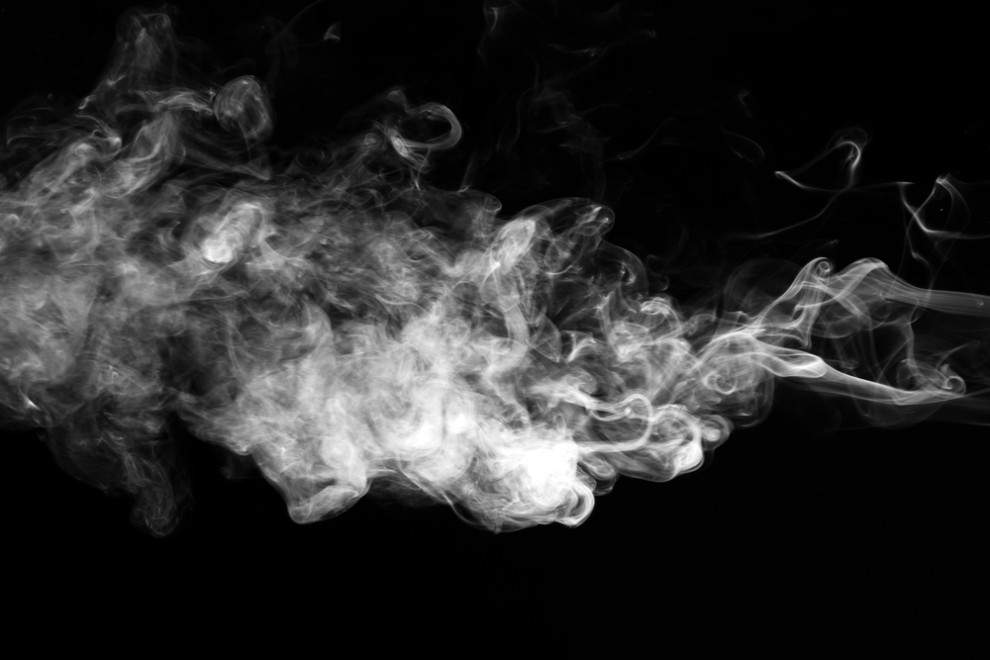Outgassing control is therefore critical for any application where vacuum environments are used, such as in diverse fields including semiconductor manufacturing, accelerator physics, space simulation, metallurgy, and scientific instrumentation. This blog post will examine what outgassing is, the harm it causes, and the stringent contamination control measures required to minimize outgassing. We will explore how quantitative cleanliness standards are set and verified, strategies to reduce outgassing risks during manufacturing, effective cleaning techniques, protocols to avoid recontamination after cleaning, and the challenges of achieving the necessary cleanliness levels.
What is Outgassing and Why is it Harmful in Vacuum Systems?
Outgassing refers to the release or evolution of gases either absorbed on the surfaces of, or trapped within materials used inside vacuum environments. When these contaminated materials are exposed to the vacuum, the gases can escape and emanate into the vacuum chamber or components.
Types of Gases Released Through Outgassing
There are two primary categories of gases that outgas from materials in a vacuum:
Volatile Hydrocarbons: These include light gases such as water, methane, carbon dioxide, and other low molecular weight hydrocarbons. These types of volatiles tend to outgas relatively quickly and easily from materials.
Non-Volatile Hydrocarbons: These are heavier hydrocarbons that have higher molecular weights. They are more tightly bound in materials and outgas more slowly over longer periods. But they can still gradually contaminate vacuum systems.
Negative Effects of Outgassing in Vacuum Systems
Outgassing causes various seriously detrimental effects for the performance of vacuum systems across a range of applications:
-
It greatly increases pressure levels inside the vacuum environment due to the large quantities of released gases. This impairs vacuum levels and limits how low pressures can be achieved.
-
Outgassed molecules can condense or chemically react on surfaces like optical sensors or coatings. This leads to the degradation of sensitive surfaces.
-
The kinetic energy of outgassed particles can degrade or damage sensitive coatings applied to various vacuum components.
-
Outgassed gases can interfere with the operation of scientific instruments electron and ion particle beams.
The Critical Need to Control Outgassing
Based on these highly deleterious effects, controlling outgassing is essential for:
-
Achieving and maintaining the required vacuum levels.
-
Ensuring the ongoing reliability and performance of vacuum system components.
-
Extending service lifetimes of vacuum systems, preventing the need for frequent reconditioning.
In summary, outgassing can severely impair vacuum system function and must be minimized as much as possible.
Setting Quantitative Standards for Vacuum Cleanliness
To manage and control outgassing, stringent quantitative cleanliness standards must be set based on the maximum allowable quantities of outgassed contaminants.
Key Parameters for Vacuum Cleanliness Specifications
Vacuum cleanliness is governed by specifications for maximum permissible outgassing rates of relevant gases. Key parameters include:
-
Outgassing rates for volatile hydrocarbons – The quantity per unit time of light outgassed gases like water, CO2.
-
Outgassing rates for non-volatile hydrocarbons – Outgassing rates for heavier hydrocarbon molecules.
-
Maximum outgassing rates for water – The amount of water vapor evolution permissible.
These outgassing rates are typically defined in pressure x volume units per unit time, such as Pa x m3/second. Very low magnitudes are usually required.
Verifying Cleanliness Through Residual Gas Analysis
The primary technique used to verify whether vacuum cleanliness standards are met is residual gas analysis (RGA). This works by sampling gases present in the vacuum environment and using mass spectrometry to identify and quantify the amounts and types of gases making up the residual gas.
By periodically performing RGA on a vacuum system, any contamination issues can be detected. RGA allows verifying that outgassing specifications are continually satisfied over the operating lifetime of the vacuum equipment. If standards are exceeded, additional cleaning is generally required to reduce outgassing levels.
Strategies for Minimizing Outgassing During Manufacturing
To achieve stringent vacuum cleanliness requirements, extraordinary care must be taken during the manufacturing, assembly, and testing of components to minimize contamination that could lead to outgassing.
Material Selection to Minimize Outgassing Risk
Proper selection of materials is critical to avoid those prone to outgassing:
-
Polymeric materials are notorious sources of significant outgassing. Their use should be avoided in vacuum systems when possible, or highly specialized variants with reduced outgassing selected.
-
Metals with known low outgassing tendencies should be used, including various grades of stainless steel optimized for ultra-high vacuum applications. Surface treatments like anodization can reduce outgassing of some metals like aluminum.
-
Any coatings applied to components must be properly qualified to ensure suitably low outgassing rates. The porosity and morphology of coatings can impact their outgassing behavior.
Critical Process Control Measures
In addition to rigorous material selection, stringent control of manufacturing processes is vital:
-
Clean work environments are needed to minimize airborne particulates and chemical contaminants that could be absorbed by materials and eventually outgas in vacuum.
-
All tools and fixtures used in manufacturing must themselves be cleaned to standards matching the final cleanliness of the vacuum components.
-
Cutting and lubricating fluids used in machining should be eliminated or tightly controlled to prevent contamination.
-
Frequent precision cleaning between each major manufacturing process step is essential to avoid accumulation of contaminants.
-
Thorough pre-assembly cleaning using wet processes combined with vacuum bake-out is also critical.
Personnel Training
Training personnel on cleanliness protocols and avoiding contamination is vital for success.
Effective Bake-Out Cleaning Techniques
Bake-out vacuum heating is one of the most common and effective cleaning methods used to remove outgassed contaminants prior to vacuum service.
Typical Bake-Out Process Steps
In a bake-out process, parts are heated to around 120°C or higher for a minimum of 24 hours. This is done under vacuum conditions below 10^-5 mbar. Sometimes a nitrogen purge is also applied to aid in removing outgassed molecules.
How Bake-Out Cleaning Works
Heating accelerates outgassing from materials and allows those contaminants to be removed from the system rather than redeposited.
Benefits of Bake-Out Cleaning
When properly performed, bake-out provides multiple benefits:
-
It significantly reduces the overall outgassing rate of parts once put into service.
-
Bake-out removes water vapor, solvents, organics, and other contaminants.
-
It is a relatively simple and cost-effective cleaning technique for many part geometries.
Optimizing Bake-Out Cleaning
The bake-out process can be supplemented and optimized by using:
-
Higher temperatures for shorter durations.
-
Ultra-high vacuum levels below 10^-10 mbar.
-
Integrating plasma discharge or other energetic radiation exposure to assist cleaning.
Analyzing the quantity and types of residues collected during bake-out using RGA allows dialing in process parameters like temperature, pressure, and duration to maximize cleaning effectiveness.
Preventing Recontamination After Cleaning
After parts undergo extensive cleaning procedures, diligent precautions must be taken to prevent recontamination prior to installation in vacuum systems.
Packaging Solutions
Packaging is the first line of defense against recontamination:
-
Package parts in materials compatible with ultra-high vacuum surface cleanliness, such as certain grades of stainless steel, specialty polymers, or films.
-
Nested packaging with multiple layers helps protect inner cleaner layers.
-
Packaging must fully isolate parts from particulate, chemical, and biological recontamination risks.
Controlled Environments
Cleaning, assembly, and testing should take place in controlled cleanroom environments optimized to avoid adding contamination.
Transportation Methods
Transportation methods must protect parts from mechanical shock, vibration, impacts, and temperature swings that could reintroduce contamination.
Handling Procedures
Strict adherence to cleanroom garment protocols is mandatory whenever handling cleaned parts. Parts must only contact cleaned surfaces and gloves. Special handling fixtures may be utilized.
Training Personnel on Protocols
Comprehensive training to personnel on recontamination avoidance protocols is equally as important as the cleaning itself. Cleanliness can easily be ruined by simple mishandling.
Challenges of Achieving Stringent Outgassing Standards
While critical, achieving highly stringent outgassing standards poses formidable challenges:
Tight Control Over All Factors
Maintaining cleanliness specifications requires extremely tight control over materials, processes, cleaning methods, assembly environments, and personnel training. A single weak link can ruin all other efforts.
Constant Verification Testing
Standards must be verified continuously via RGA and other methods over the entire operating lifetime of the vacuum equipment. This requires diligence.
Avoiding Human Errors
Humans can easily make errors that introduce recontamination. Personnel need excellent training on contamination control disciplines.
In summary, stringent outgassing standards demand near perfection at all steps. Personnel must uphold consistent procedures to prevent contamination and ensure high vacuum performance over the entire product lifetime.
Conclusion
Preventing detrimental outgassing is imperative when working with contamination-sensitive vacuum processes, as found widely in fields from semiconductor manufacturing to space simulation. But achieving sufficiently low outgassing levels poses many difficulties. Careful material selection, tightly controlled manufacturing, extensive precision cleaning, and rigorous contamination control after cleaning are all essential. Outgassing standards need constant verification via residual gas analysis. There are significant technology and human factors challenges to overcome. However, the rewards of minimizing harmful outgassing are reliable vacuum systems with extended operational lifetimes.



